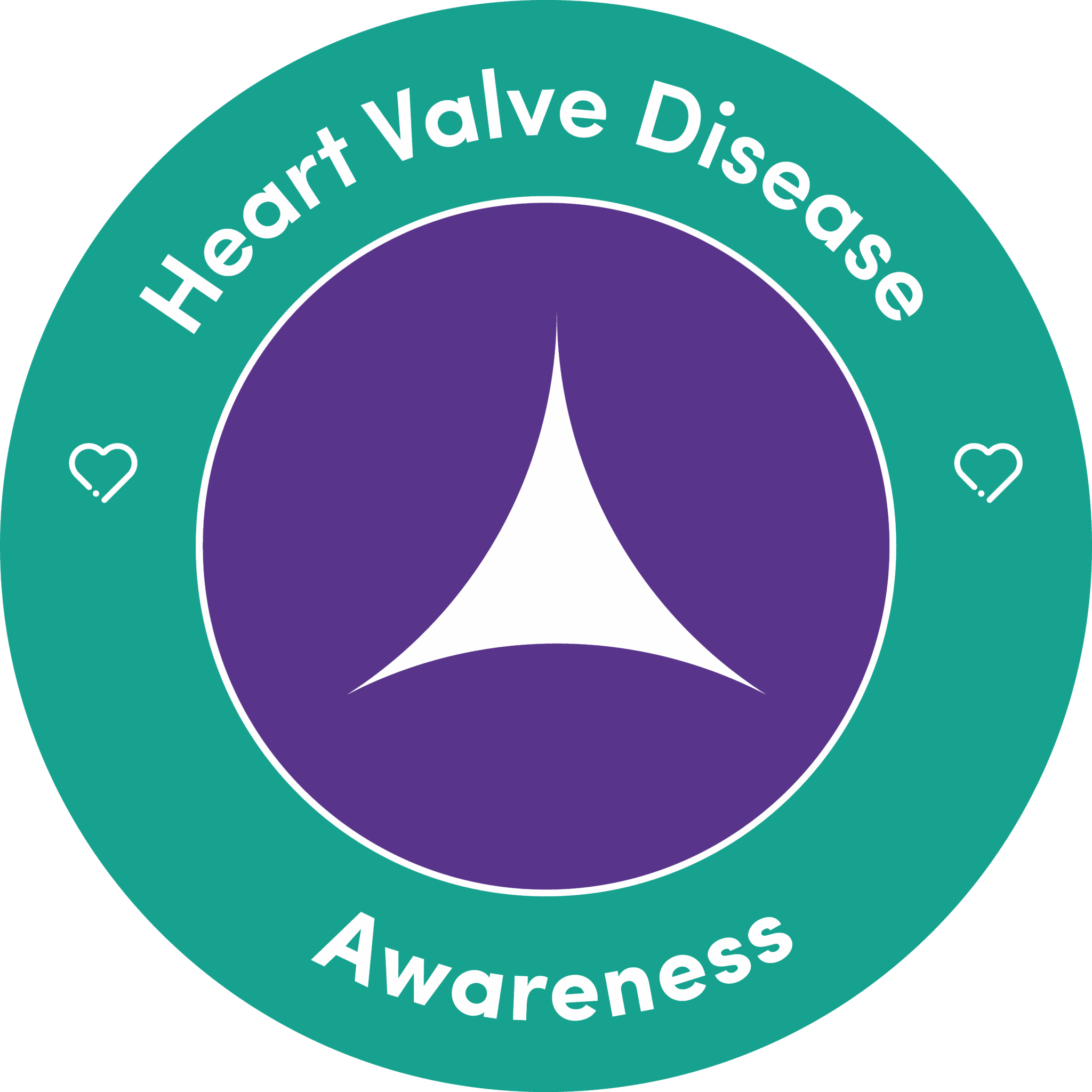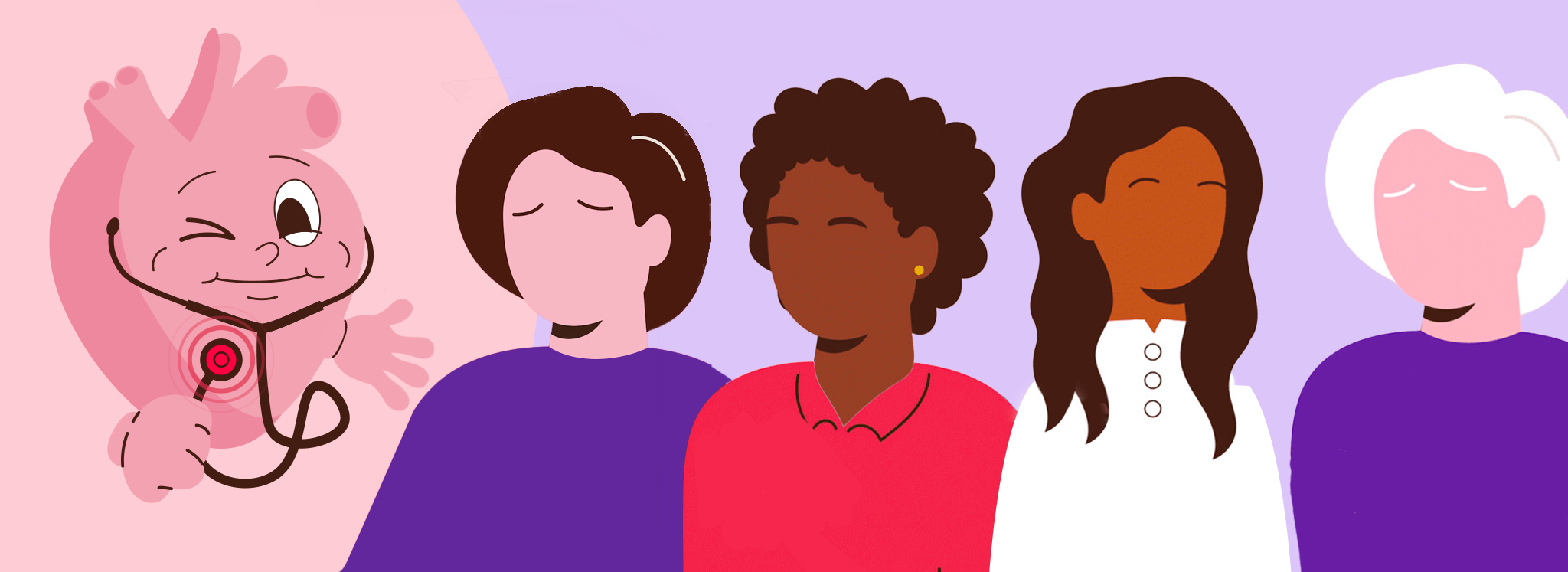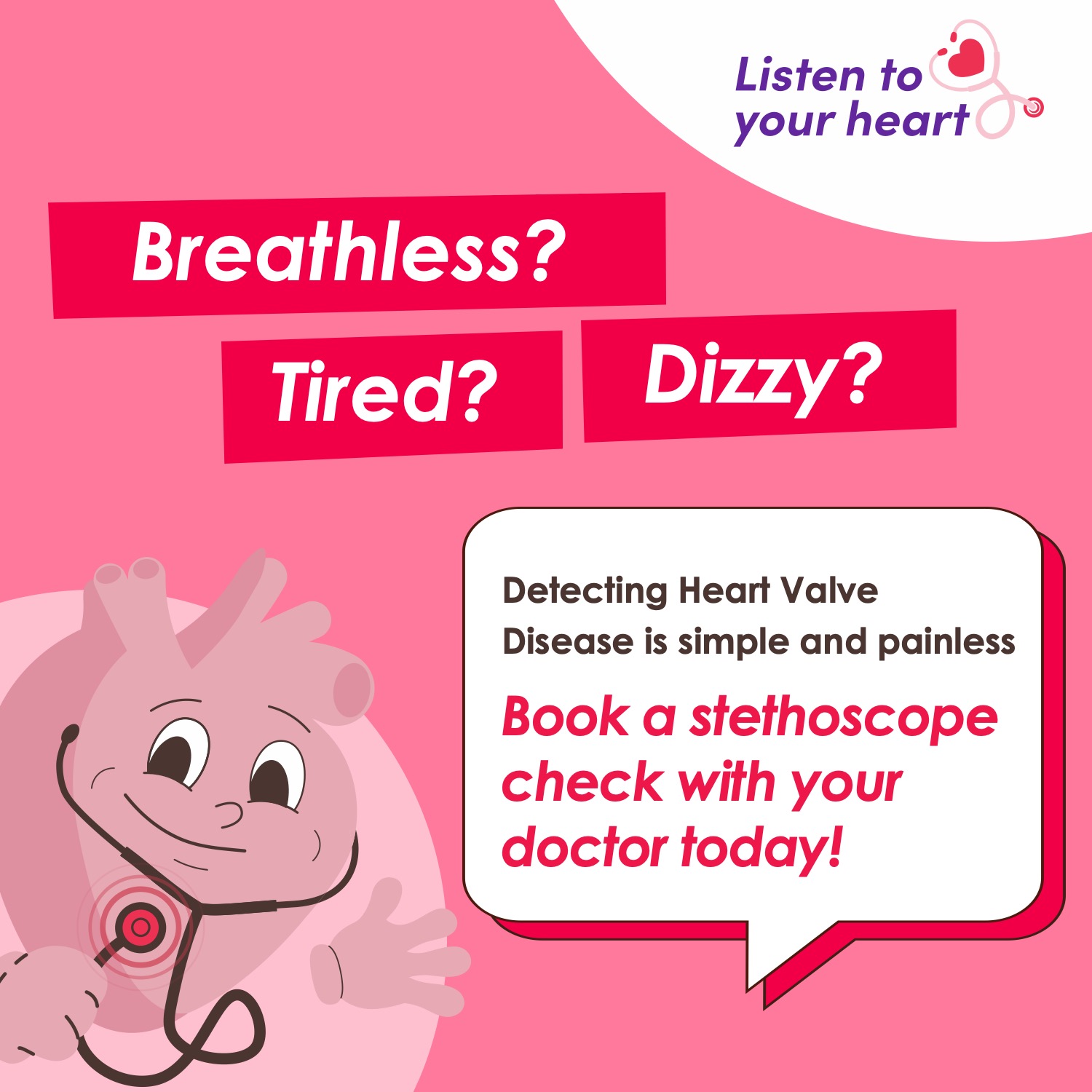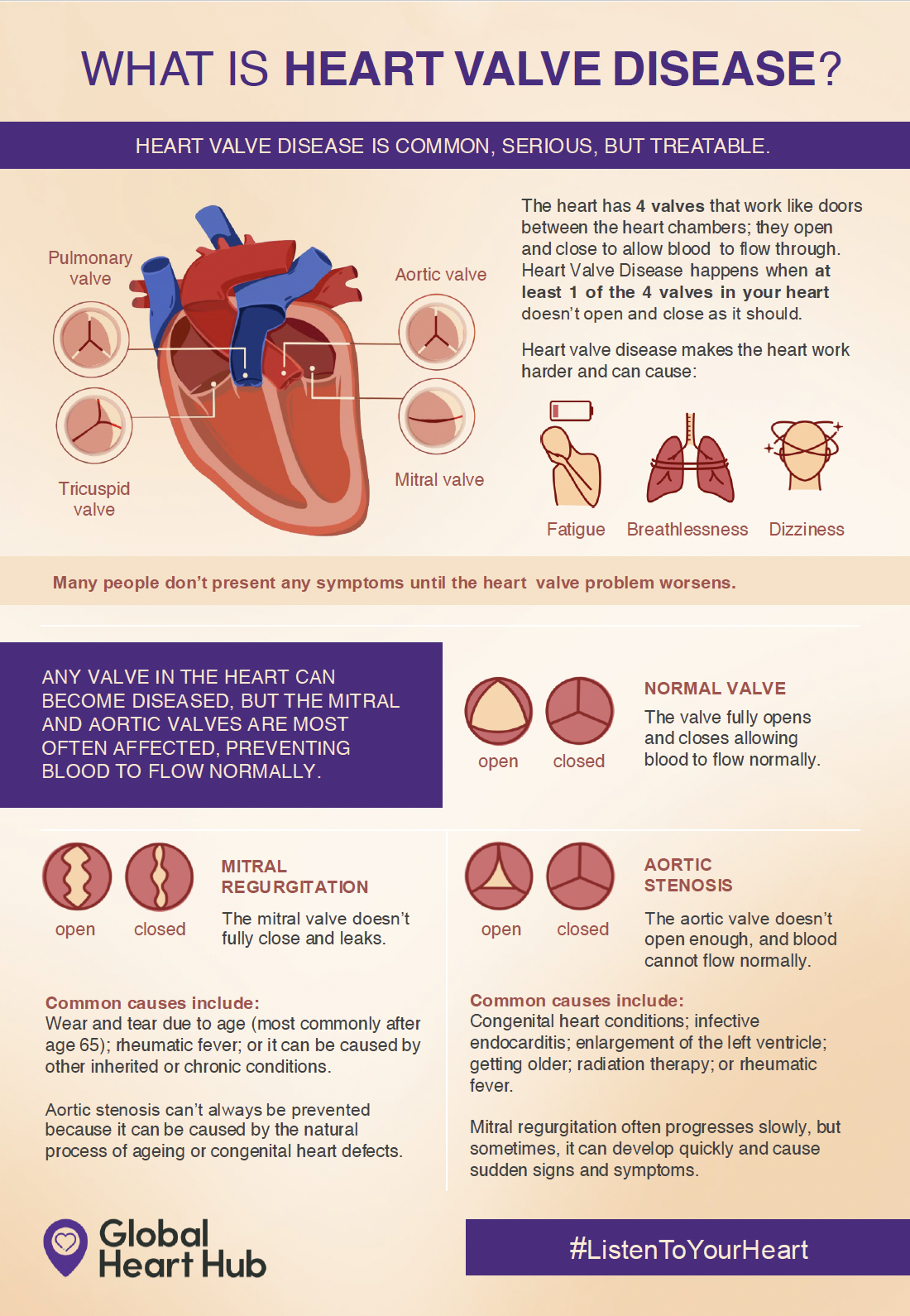
Heart Valve Disease Awareness Week
September 15 – 21, 2025

Share This Message!
Heart Valve Disease is a medical condition that occurs when one or more of the four valves in our heart don’t work properly.
There are different ways that heart valves can stop working properly. Sometimes valves don’t fully open, so less blood gets through. Sometimes valves don’t fully close, so they leak, allowing blood to flow the wrong way.
Detection of HVD involves identifying symptoms and listening to the heart with a stethoscope for a ‘heart murmur’ – an abnormal sound heard between the sounds of your regular heartbeat. A murmur does not always mean that there is a problem, but patients with warning signs, like a heart murmur, should be referred to a cardiologist, who will perform additional examinations to confirm the diagnosis.
Symptoms like breathlessness, dizziness or fatigue may not appear for years and may vary. For some HVD patients, symptoms don’t show for many years, or might not present at all, making diagnosis more difficult, so a regular stethoscope check with your doctor is a good idea.
HVD is a common, serious, but treatable. With early detection and diagnosis, people can live better and longer.
#HeartValveDisease

Women and Heart Valve Disease
Despite being recognised as the next cardiac epidemic, sex and gender differences in heart valve disease are still being overlooked. Women living with heart valve disease (HVD) face critical challenges, from delayed diagnosis to lack of tailored support. There is a clear need for a better understanding of sex and gender differences in women living with HVD, including investigation of biological differences from men, and also their gender identity and social experiences.
We can no longer overlook women with HVD. Their lives depend on being seen, heard, and prioritised.
Global Heart Hub has launched a global consensus report Shaping the Future for Women with Heart Valve Disease, revealing critical gaps in the diagnosis, treatment, and long-term care of women living with HVD.
What is heart valve disease?
Heart Valve Disease is a medical condition that occurs when one or more of the four valves in our heart don’t work properly. Heart valves are one-way gates at each of the points where blood enters or exits the heart. They maintain proper flow of blood through our bodies.
There are different ways that heart valves can stop working properly. Sometimes valves don’t fully open, so less blood gets through. Sometimes valves don’t fully close and leak, allowing blood to flow the wrong way. Symptoms like breathlessness, dizziness or fatigue may not appear for years and may vary.
When the blood doesn’t flow smoothly through the heart it can cause a heart murmur. Your doctor can hear this murmur with a stethoscope.
Heart valve disease is common, serious, but treatable. A simple stethoscope check is the first step to detecting Heart Valve Disease. So, a regular stethoscope check with your doctor is a good idea.

Materials to download:
Watch the videos below to hear from people living with heart valve disease
Get Involved
To join the campaign or for more information, please email info@globalhearthub.org.
Campaign Partners
- AEPOVAC, Spain
- Alliance du Coeur, France
- Aortic Hope, US
- Banmo520, China
- Croí, the heart and stroke charity, Ireland
- Cuore Nostro, Italy
- European Association of Patients with Cardiovascular Diseases, Poland
- Heart Health India Foundation, India
- Heart Valve Voice, Canada
- Heart Valve Voice, Japan
- Heart Valve Voice, UK
- Heart Valve Voice, US
- hearts4heart, Australia
- Initiative Herzklappe, Germany
- Instituto Lado A Lado Pela Vida, Brazil
- Meine Herzklappe, Austria
- The Mended Hearts, US
- Asociación Pacientes de Corazón (PACO), Mexico
- Rock from the Heart, US
- SASNET, Ghana
- Stichting Hartpatiënten, Netherlands
- One New Heart, Tanzania
- WomenHeart, US
- Guardians of the Heart, US
- I have a Heart Foundation, Jamaica
- Access Heart Foundation, Nigeria
Supported by:











